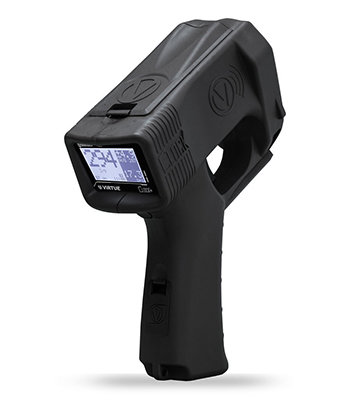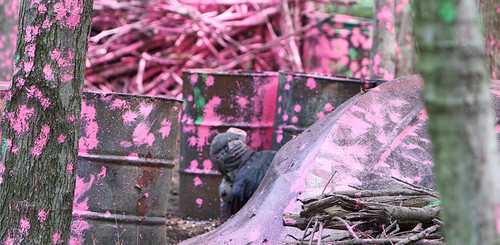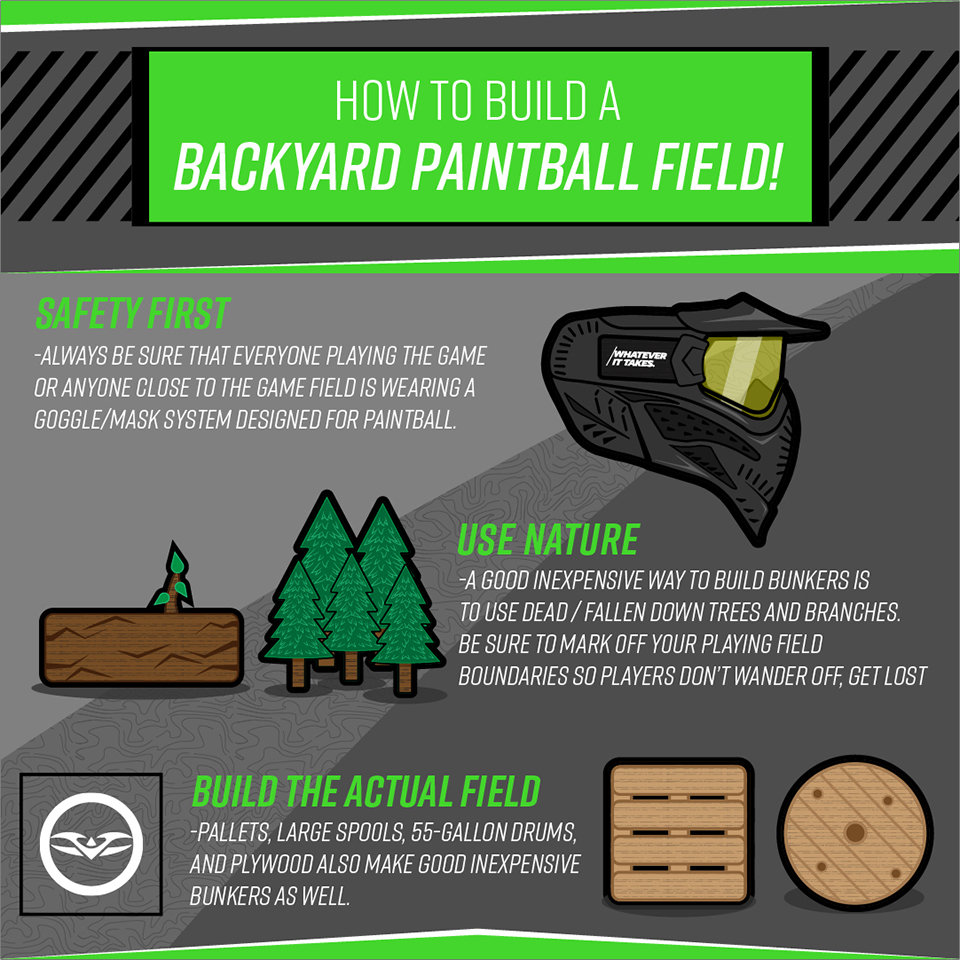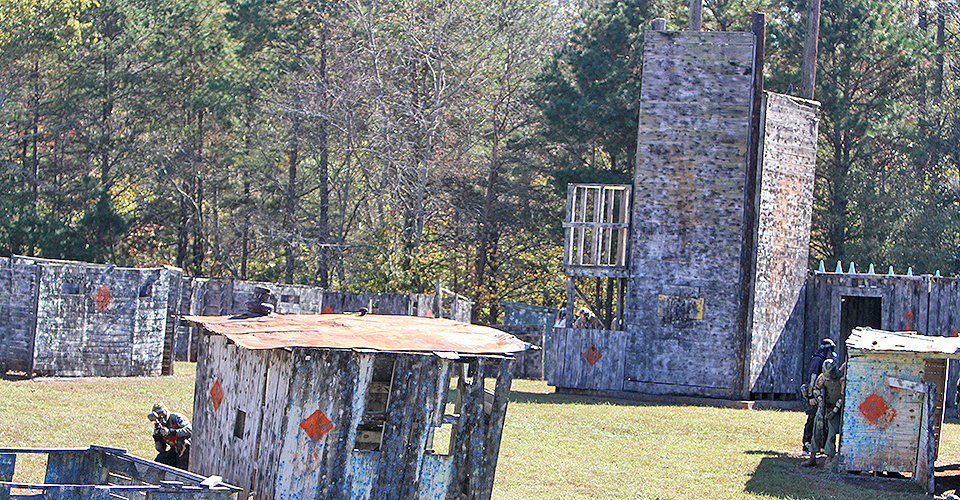How to Build a Backyard Paintball Field!
Posted by John Amodea with Josh Silverman on 28th Sep 2020
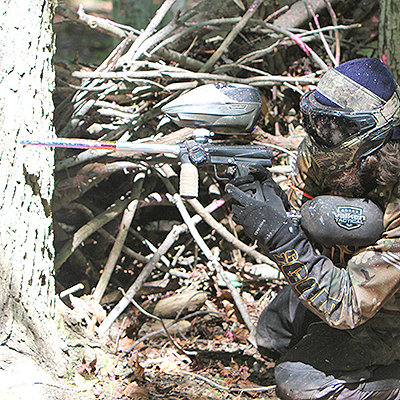
Building a Back Yard Paintball Field!
If you can't get to a professional paintball field, here's some tips to build a paintball field of your own for safe paintball fun!
If you’ve got some property that you own or that a friend or family member owns, building your own paintball field can bring the game to you when you are not able to get to your local playing fields. Let’s be honest… nothing beats playing paintball in a commercial field setting where there are dozens, if not hundreds of other players—and multiple fields with castles, forts, speedball fields, Hyperball fields, airball fields, and trenches. But for many players, the nearest field is an hour away, is out of their budget, or simply not open on weekdays when you have the time and friends to play with. Building your own field may be the answer.
The Property
The most important thing in making your own paintball field is obviously having the property and space to do it. And the most important consideration here is making sure that you have ample distance between your playing field and someone else’s property. Be 100-percent certain that no matter where and how a paintball is fired from your field, that there is no chance of hitting a person not playing the game, another house or property, cars, or anything else that it shouldn’t. A paintball gun can fire a paintball about 350 feet if shot at the right angle and at 300 feet per second, so a minimum amount of buffer space for your field would be at least 375 feet around all sides of the field. More is even better.
Building the Actual Playing Field
A good inexpensive way to build bunkers is to use dead fallen-down trees and branches. You can just drag them to a few spots on each side of the field and stack them horizontally. Place a few vertically to lock the horizontal branches in place. Check the bunker for sturdiness every few weeks and remove any sharp pointed branches for safety. Where you place the bunkers depends on how many people you expect to be playing, what type of guns you’ll be shooting and how big your field is. It’s important to leave enough space that as players move, they can be eliminated—but not so much space that everyone just sits in their bunkers the entire game. If you’re playing with magfed guns, pump-guns or anything else “low-tech,” more space is okay. If everyone is shooting electronic guns you’ll want less space between the bunkers so players have a chance to get from point A to point B.
Pallets and plywood also make good inexpensive bunkers as well. You’ll probably want to put some sort of paint or sealant on these so they last more than one season of playing. If you have access to 55-gallon drums, large spools (usually used for telephone pole cables) or any other large unused structures, these work well for variety on the field. Just be careful of rusty nails or other metal items that might cut or otherwise injure someone who might come into contact with the bunkers you’re building.
The size of your field depends on your property, what type of games you expect to play and how many players will be playing. If you like a stealth type of game or a hide-and-seek game, larger fields are obviously better. If you want in your face action from the get-go, smaller fields are fine.
Use Nature
When you’re building your own field be aware of what’s already in front of you. Natural hills, berms and dried-our creek beds make great cover. If your property is sloped be sure to set the field up in such a way that both teams can get to or have access to the high ground. Shooting down at your opponent is a great advantage, so you don’t want only one side having that advantage every game. Depending on where your land is located you may have large trees, big boulders or other natural obstacles. Again, lay out your field in a way that both teams/sides have equal opportunities to use these.
Be sure to mark off your playing field boundaries so players don’t wander off, get lost, or have a strategic advantage when you’re playing. A good way to do this is with some small-diameter nylon rope or other inexpensive rope/string, and placing “surveyor’s tape” stringers hanging vertically every few feet so the boundaries can be seen easily. Simply tie-off the rope on trees that border your playing field.
Once your field is set up and ready to go, it will take a handful of games before the field is completely balanced from one side to the other—that neither team has an advantage before the game even starts.
Last thing. Before you get playing do a thorough check of the property for things like broken glass, barbed-wire, fire ants (if you live in an area where they are indigenous), bee or hornet nests, or anything else that make be a safety hazard.
Chronograph
Once you start playing games on your field, safety is paramount. No one wants to see anyone getting hurt and the best way to prevent injuries is to make sure all of the guns are chronographed at 300 feet per second or less—and to do this you need a chronograph. Chronographs measure the speed (velocity) of a paintball as it leaves the barrel. They’re relatively inexpensive now, and a must-have to ensure both safety and fair play – nobody likes an opponent with an unfair advantage.
Goggles
Always be sure that everyone playing the game or anyone close to the game field is wearing a goggle/mask system designed for paintball. Never wear shooting glasses, ski goggles or any other type of protection not made specifically for paintball. Airsoft goggles are not going to work for paintball either. Many are not rated to stop the impact of a paintball and others don’t cover the eyes, mouth and ears like a paintball-approved goggle system does. PAINTBALL SAFETY IS NON-NEGOTIABLE!
Legal
Check your local laws to be sure where you want to play paintball it will be legal to do so. Ensure that if the land you’re playing on isn’t yours, you have permission to be there, and to play paintball on it. Nobody wants a game of paintball interrupted by police officers or sheriff’s deputies responding to people in the woods with guns! They may do this anyway – but at least if they do, you’ll know that between safety and permission to be where you are and doing what you’re doing, a simple polite conversation can defuse the situation and get everyone back to the game. It’s also a good idea to be sure that the piece of land you intend to play paintball on isn’t used for other things like ATV riding, horseback riding or hunting to make sure someone not wearing goggles doesn’t wander into the middle of your game.
Alright, get out there and start building. Always think safety first no matter how and where you make your paintball field. Have fun!
